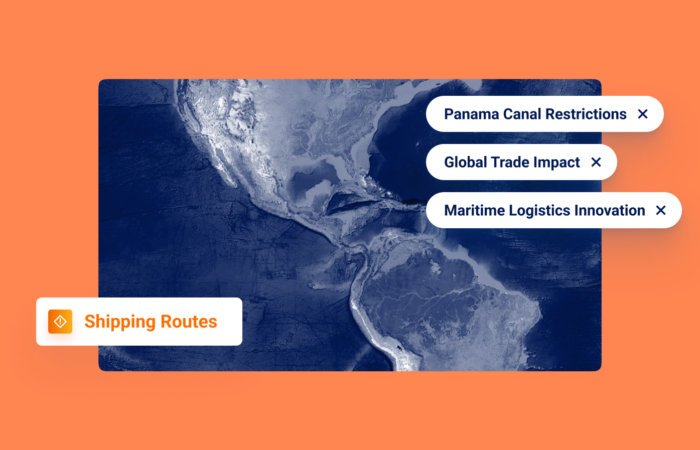What’s inside?
Detention and demurrage charges sometimes feel inevitable, but with the right technology in place, these fees can be reduced, or even avoided.
Detention and demurrage charges are a thorn in the side of freight forwarders, beneficial cargo owners (BCOs), exporters, and importers. These charges exist to reduce excessive delays and prevent congestion at ports, terminals, and storage facilities, and ensure the timely return of empty containers to maintain the smooth flow of goods throughout the supply chain. This is a good thing.
But shippers are still doling out major amounts every year in these fees, which impacts their bottom line. While detention and demurrage charges have dropped since the pandemic, they are still substantially higher than their pre-pandemic levels. Data collected from CMA CGM, COSCO, Evergreen, Hapag-Lloyd, Hyundai Merchant Marine, Maersk, Mediterranean Shipping Company, ONE, and Yang Ming, shows that these carriers collected about $11.7 billion in charges between April 2020 and December 2022!
It’s easy to dismiss these fees as “part of the process” or a “necessary evil” to keep the supply chain on track. But maybe they can sometimes be prevented, avoided, or at least reduced. Let’s take a look at three myths that surround detention and demurrage charges.
- #1 – You can’t avoid or reduce detention and demurrage fees: carrier ETAs are often inaccurate – with different carriers often reporting different ETAs for the same vessel – making it impossible to reduce or avoid detention and demurrage charges.
In fact: with the right tools, they can be avoided or reduced. The right AI-based platform can automatically alert you to containers that do not arrive on schedule, whether late or early; and transshipments can be automatically tracked.
In addition, Maritime AI™ supplies organizations with the required insights to make the right decisions at the right time on haulage management and container off-port storage options, reducing detention and demurrage costs.
Using this technology, you have visibility into when a container is in transit, you can predict delays at least 10 days in advance, and even include buffer days to mitigate delays. You can then plan in advance, so you have plenty of time to mitigate potential issues, make smart corrections, and reduce or even avoid detention and demurrage charges altogether.
- #2 – Most detention and demurrage fees are accurate: the carriers are always on top of things and know how to properly charge BCOs, freight forwarders, importers, and exporters.
In fact: with all the moves a container makes, mistakes will simply happen. With the massive amount of data collected from disparate sources, dates and durations can tend to be incorrect, and fees will often be calculated inaccurately.
The Windward Maritime AI™ solution enables shippers to cross-reference the charges with the actual time your containers were in possession, to validate the fees accurately. It’s vital to be able to get real-time updates on actual times of arrival (ATA) and departure (ATD), accurately verify the dates and duration of detention or demurrage, and reassess these timestamps whenever detention and demurrage invoices arrive, to support invoice reconciliation and raise any discrepancies.
Accuracy in documenting ATA is crucial, ensuring that timestamps are correctly recorded to establish the exact duration of container storage at ports or terminals. By having precise ATA information, you can dispute unjustified and unnecessary detention or demurrage charges.

- #3: It’s impossible to track shipments in real-time to reduce detention and demurrage costs: endless touch points and variables in a shipping journey make tracking the shipment far too time-consuming for humans, resulting in potentially over-inflated and unavoidable detention and demurrage fees.
In fact: the secret sauce is eliminating manual track and trace processes, reducing phone calls or emails to ocean carriers, and optimizing time management and resource allocation. Maritime AI™ offers insights that trigger automatic alerts in real-time, eliminating the inaccuracy and delays involved with manual tracking and reporting.
Enhanced track and trace with full visualization of the exact container location and details of the entire route, as well as Reasons for Delay, are must-have features for any ocean freight visibility solution. With real-time, accurate alerts, you can immediately take corrective action to prevent or reduce detention and demurrage fees.
It doesn’t matter how you slice it, detention and demurrage charges are costing organizations a lot of money and are still a major source of stress when it comes to the bottom line. It’s not a myth that with the right Ocean Freight Visibility technology, detention and demurrage charges can become much less of a pain point.






